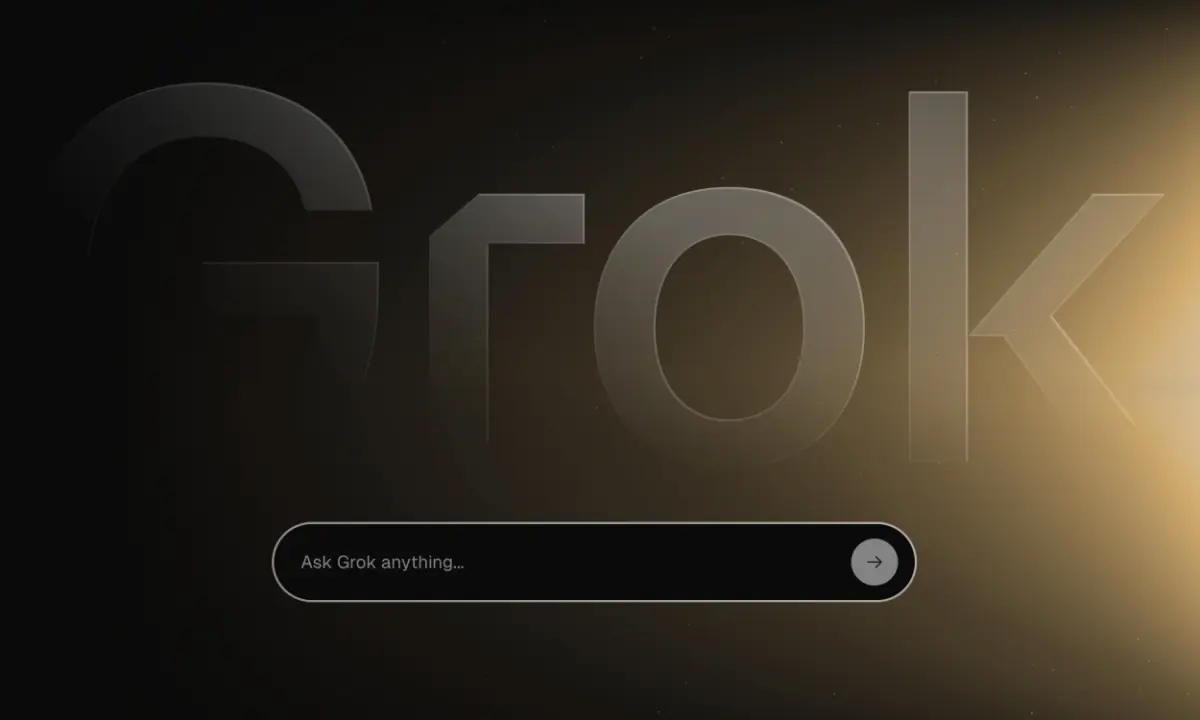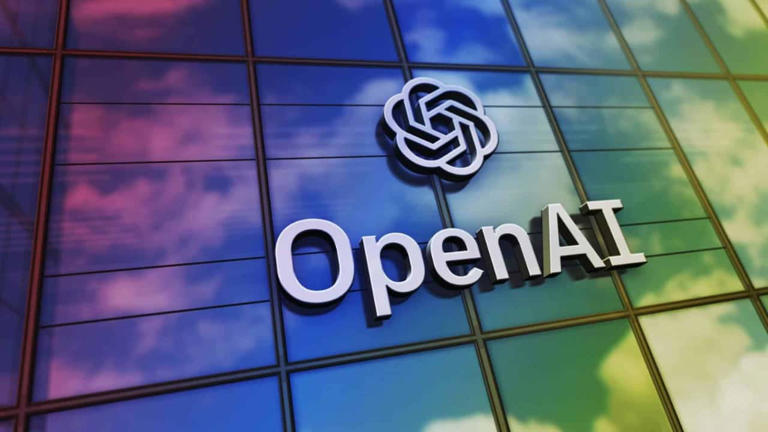News, Ethics & Drama
OpenAI Unveils GPT-4.5: A Focus on Conversational Nuance

OpenAI has pulled back the curtain on GPT-4.5, the latest iteration of its flagship large language model (LLM). The company is touting it as its most capable model yet for general conversation, representing what OpenAI research scientist Mia Glaese calls “a step forward for us.”
This release clarifies OpenAI’s recent strategy, which seems to involve two distinct product lines. Alongside its “reasoning models” (like the previously mentioned o1 and o3), GPT-4.5 continues what research scientist Nick Ryder refers to as “an installment in the classic GPT series” – models focused primarily on broad conversational ability rather than step-by-step problem-solving.
Users with a premium ChatGPT Pro subscription (currently $200/month) can access GPT-4.5 immediately, with a broader rollout planned for the following week.
Scaling Up: The Familiar OpenAI Playbook
OpenAI has long operated on the principle that bigger models yield better results. Despite recent industry chatter – including from OpenAI’s former chief scientist Ilya Sutskever – suggesting that simply scaling up might be hitting diminishing returns, the claims around GPT-4.5 seem to reaffirm OpenAI’s commitment to this approach.
Ryder explains the core idea: larger models can detect increasingly subtle patterns in the vast datasets they train on. Beyond basic syntax and facts, they begin to grasp nuances like emotional cues in language. “All of these subtle patterns that come through a human conversation—those are the bits that these larger and larger models will pick up on,” he notes.
“It has the ability to engage in warm, intuitive, natural, flowing conversations,” adds Glaese. “And we think that it has a stronger understanding of what users mean, especially when their expectations are more implicit, leading to nuanced and thoughtful responses.”
While OpenAI remains tight-lipped about the exact parameter count, they claim the leap in scale from GPT-4o to GPT-4.5 mirrors the jump from GPT-3.5 to GPT-4o. For context, GPT-4 was estimated by experts to potentially have around 1.8 trillion parameters. The training methodology reportedly builds on GPT-4o’s techniques, including human fine-tuning and reinforcement learning with human feedback (RLHF).
“We kind of know what the engine looks like at this point, and now it’s really about making it hum,” says Ryder, emphasizing scaling compute, data, and training efficiency as the primary drivers.
Performance: A Mixed Bag?
Compared to the step-by-step processing of reasoning models like o1 and o3, “classic” LLMs like GPT-4.5 generate responses more immediately. OpenAI highlights GPT-4.5’s strength as a generalist.
- On SimpleQA (an OpenAI general knowledge benchmark), GPT-4.5 scored 62.5%, significantly outperforming GPT-4o (38.6%) and o3-mini (15%).
- Crucially, OpenAI claims GPT-4.5 exhibits fewer “hallucinations” (made-up answers) on this test, fabricating responses 37.1% of the time versus 59.8% for GPT-4o and 80.3% for o3-mini.
However, the picture is nuanced:
- On more common LLM benchmarks like MMLU, GPT-4.5’s lead over previous OpenAI models is reportedly smaller.
- On standard science and math benchmarks, GPT-4.5 actually scores lower than the reasoning-focused o3-mini.
The Charm Offensive: Conversation is King?
Where GPT-4.5 seems engineered to shine is in its conversational abilities. OpenAI’s internal human testers reportedly preferred GPT-4.5 over GPT-4o for everyday chats, professional queries, and creative tasks like writing poetry. Ryder even notes its proficiency in generating ASCII art.
The difference lies in social nuance. For example, when told a user is having a rough time, GPT-4.5 might offer sympathy and ask if the user wants to talk or prefers a distraction. In contrast, GPT-4o might jump directly to offering solutions, potentially misreading the user’s immediate need.
Industry Skepticism and the Road Ahead
Despite the focus on conversational polish, OpenAI faces scrutiny. Waseem Alshikh, cofounder and CTO of enterprise LLM startup Writer, sees the emotional intelligence focus as valuable for niche uses but questions the overall impact.
“GPT-4.5 feels like a shiny new coat of paint on the same old car,” Alshikh remarks. “Throwing more compute and data at a model can make it sound smoother, but it’s not a game-changer.”
He raises concerns about the energy costs versus perceived benefits for average users, suggesting a pivot towards efficiency or specialized problem-solving might be more valuable than simply “supersizing the same recipe.” Alshikh speculates this might be an interim release: “GPT-4.5 is OpenAI phoning it in while they cook up something bigger behind closed doors.”
Indeed, CEO Sam Altman has previously indicated that GPT-4.5 might be the final release in the “classic” series, with GPT-5 planned as a hybrid model combining general LLM capabilities with advanced reasoning.
OpenAI, however, maintains faith in its scaling strategy. “Personally, I’m very optimistic about finding ways through those bottlenecks and continuing to scale,” Ryder states. “I think there’s something extremely profound and exciting about pattern-matching across all of human knowledge.”
Our Take
Alright, so OpenAI dropped GPT-4.5, and honestly? It’s kinda interesting what they’re doing here. Instead of just pushing for the absolute smartest AI on paper (like, acing math tests), they’ve gone all-in on making it… well, nicer to talk to. Think less robot, more smooth-talking, maybe even slightly empathetic chat buddy.
It definitely makes sense if they want regular folks to enjoy using ChatGPT more – making it feel natural could be huge for keeping people hooked. But let’s be real, it also stirs up that whole debate: is just making these things bigger and bigger really the best move anymore? Especially when you think about the crazy energy costs and the fact that, okay, maybe your average user won’t notice that much difference in day-to-day stuff.
Some critics are already saying this feels like OpenAI is just polishing the chrome while the real next-gen stuff (hello, GPT-5 hybrid?) is still cooking. Like, is this amazing conversational skill worth the squeeze, or is it just a placeholder? It definitely throws a spotlight on that big question in AI right now: do we want AI that can chat like a human, or AI that can crunch complex problems like a genius? And which one actually moves the needle for us? Kinda makes you wonder where things are really headed…
What do you think?
This story was originally featured on MIT Technology Review.

News, Ethics & Drama
Grok Gets a Memory: xAI Chatbot Remembers Past Conversations

Get ready for more personalized chats with Grok! Elon Musk’s xAI is rolling out a new “Memory” feature for its AI chatbot, aiming to make interactions smoother and more context-aware. This move brings Grok’s capabilities closer to competitors like OpenAI’s ChatGPT, which introduced a similar memory function earlier.
The core idea behind Grok Memory is simple: the chatbot will now remember details and preferences from your previous conversations. This allows Grok to build upon past interactions, avoiding the need for users to constantly repeat information or context. For example, if you’ve previously mentioned your coding preferences or dietary restrictions, Grok should recall these details in future chats.
How Grok Memory Works
According to xAI, the feature is designed to improve the helpfulness and flow of conversations over time. As you chat more with Grok, its memory will evolve, tailoring responses more specifically to your needs and history. This could lead to more efficient problem-solving, better recommendations, and a generally less repetitive user experience.
Importantly, xAI emphasizes user control over this feature. Users will reportedly be able to view what Grok remembers, delete specific memories, or turn the entire Memory feature off if they prefer not to use it. This addresses potential privacy concerns often associated with AI systems retaining user data.
Catching Up in the AI Race
The introduction of Memory positions Grok more competitively against other leading AI chatbots. Remembering context is becoming a standard expectation for sophisticated AI assistants, and this update helps xAI keep pace. The feature is reportedly rolling out gradually to Grok users.
Our Take
So Grok is finally getting a memory, letting it remember stuff from past chats. Makes sense – it’s kinda table stakes now if you want to compete with ChatGPT. No one likes repeating themselves to an AI, so this should make using Grok feel less like starting from scratch every single time.
Giving users control to see, delete, or turn off the memory is definitely the right call, hitting those privacy concerns head-on. Still, it shows how crucial personalization (and the data that fuels it) is becoming in the AI chatbot game. It’s all about making these tools feel less like generic bots and more like assistants that actually know you.
This story was originally featured on Beebom.
News, Ethics & Drama
OpenAI Ups the Ante with New ‘Reasoning’ Models: Meet o1 and GPT-4.5 Turbo

OpenAI is pushing the boundaries again, rolling out a fresh batch of AI models designed to tackle more complex tasks with deeper reasoning capabilities. Headlining the release are the new ‘o1’ models – o1-preview and o1-mini – alongside an updated GPT-4.5-Turbo, signaling a continued focus on enhancing how AI processes information and interacts with the world.
The key innovation with the o1 series appears to be a more deliberate, step-by-step “thinking” process. Unlike standard large language models (LLMs) that often generate the first plausible answer, these models are built to reason through problems more methodically before providing a response. This approach aims to improve accuracy and reliability, especially for complex queries in areas like science, math, and coding.
Introducing the New Lineup:
- o1-preview: Positioned as the top-tier reasoning model, designed for the most demanding tasks requiring deep analysis and multi-step thought.
- o1-mini: A smaller, faster, and more cost-effective version, making advanced reasoning capabilities more accessible for applications where speed or budget is a key factor.
- GPT-4.5-Turbo: An updated version of their flagship GPT-4 model, likely incorporating performance improvements, knowledge updates, and potentially enhanced efficiency.
Beyond Text: Images and Tools
These new models aren’t just about text-based reasoning. OpenAI is also highlighting their multimodal capabilities, specifically the ability to analyze images and understand visual information. Furthermore, enhanced “tool use” or “function calling” allows these models to more effectively leverage external tools or APIs to perform actions or retrieve specific information, making them more versatile assistants.
These models are being made available through OpenAI’s API for developers and are also being integrated into ChatGPT, likely replacing older underlying models for users. OpenAI also mentioned updates to pricing, suggesting potentially lower costs for some of these advanced capabilities, further fueling competition in the AI space.
Our Take
So OpenAI is dropping models that actually try to “think” step-by-step? That feels like a pretty significant shift. Instead of just spitting out fancy text, the ‘o1’ series sounds like it’s built to actually *reason* through problems, which could be huge for tackling complex stuff accurately.
Making a cheaper ‘mini’ version is also smart – it gets these more powerful reasoning tools into more hands faster. It keeps the heat on competitors and pushes the whole field towards AI that doesn’t just talk, but hopefully understands and solves problems more reliably. Definitely watching this space closely!
This story was originally featured on Business Insider.
News, Ethics & Drama
NaNoWriMo Shuts Down Amid Financial Woes and Community Controversies

The National Novel Writing Month (NaNoWriMo) organization, a beloved online writing community known for its annual November challenge, has announced it is shutting down after 25 years. The nonprofit cited long-term financial difficulties as the primary reason for its closure.
Founded in 1999, NaNoWriMo grew from a simple mailing list into a global phenomenon, encouraging hundreds of thousands of aspiring authors to pen a novel draft in just 30 days. However, recent years saw the organization facing significant headwinds beyond just its finances.
Controversy flared up last year, significantly impacting community support. One major point of contention was NaNoWriMo’s stance seemingly in favor of using artificial intelligence in creative writing. This position led to high-profile resignations from its board, including bestselling authors Maureen Johnson and Daniel José Older. Their departure mirrored widespread anxiety among writers about AI models being trained on their work without consent, potentially jeopardizing their careers.
Simultaneously, the nonprofit faced criticism over inconsistent content moderation on its forums, particularly concerning the safety of younger participants. Community members argued that these moderation issues created an unsafe environment for teens.
While a NaNoWriMo spokesperson, identified as Kilby in a YouTube statement, emphasized that the recent controversies weren’t the direct cause of the shutdown, they acknowledged the impact. The statement suggested the closure was more fundamentally tied to the financial unsustainability often faced by nonprofits, stating, “Too many members of a very large, very engaged community let themselves believe the service to be provided was free.”
The demise of NaNoWriMo marks the end of an era for many writers and highlights the complex challenges facing online communities, especially when navigating issues like AI ethics, content moderation, and nonprofit funding.
Our Take
So NaNoWriMo is closing shop. While they point to money woes, you can’t ignore how their nod towards AI in writing blew up last year. It definitely cost them support when authors were already stressed about AI taking over. It makes you wonder, though – maybe they should have doubled down?
Instead of backing off, fully embracing AI’s role could have been a bold move, trying to lead the conversation. But hey, combining that kind of community pushback with shaky finances and moderation drama? That’s a seriously tough spot for any non-profit to navigate.
This story was originally featured on TechCrunch.
-

 Prompted Pixels2 weeks ago
Prompted Pixels2 weeks agoCute Severance Action Figures
-

 News, Ethics & Drama2 weeks ago
News, Ethics & Drama2 weeks agoSo, Why’s OpenAI Suddenly Sharing? It’s Not Just About the Competition
-

 News, Ethics & Drama2 weeks ago
News, Ethics & Drama2 weeks agoGemini 2.5 Pro Goes Free: Google’s AI Game-Changer Unleashed
-

 News, Ethics & Drama2 weeks ago
News, Ethics & Drama2 weeks agoElon Musk’s xAI Acquires X: The Future of AI and Social Media Collide
-

 News, Ethics & Drama2 weeks ago
News, Ethics & Drama2 weeks agoSurveys Say Students Are Hooked on AI, But Learning’s Taking a Hit
-

 Writing2 weeks ago
Writing2 weeks agoSudowrite Review (2025): Can It Match Human Writing?
-

 Video Vibes1 week ago
Video Vibes1 week agoSurreal Cityscape – SORA Video by Jesse Koivukoski
-

 News, Ethics & Drama1 week ago
News, Ethics & Drama1 week agoNaNoWriMo Shuts Down Amid Financial Woes and Community Controversies





















